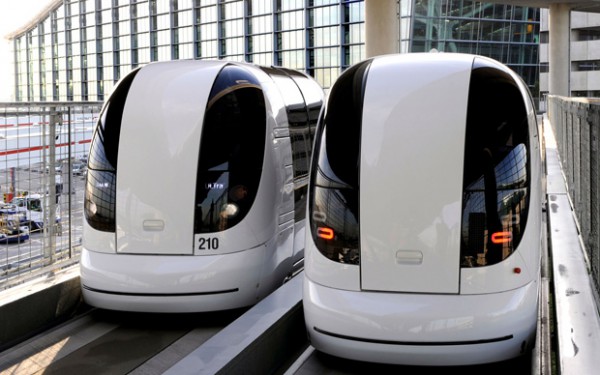Tucked in a corner of Terminal 5 at London’s Heathrow air terminal, the eventual fate of urban portability is quietly unfolding.
Since 2011, on a shut course between the terminal and the Business Car Park, 2.4 miles away, an armada of 21 humble traveler units have carried upwards of 1,000 travelers every day, quietly logging admirably more than 1m independent miles simultaneously. It’s a little scale analysis, dispatched by Heathrow Airport Holdings Limited and assembled by UK-based Ultra Global PRT (for Personal Rapid Transit), yet its prosperity – measured by expense investment funds, natural effect and ease of use – may help characterize movement in the city of tomorrow.
This is no smaller than usual line; Ultra cases are genuine autos, with elastic tires and untethered, battery-driven powertrains. In spite of the fact that they offer space for upwards of six individuals and their baggage, they are reduced, measuring 12ft long, 5ft wide and 6ft tall; and lightweight, tipping the scales at only 1,870lbs, including a 141lb battery pack.
At its 25mph top speed, the unit draws just 2kw of power and murmurs along at 35db (quieter than an icebox). Cases screen toward oneself battery level, once in a while pardoning themselves at station stops for “circumstance charging”.

More than an oddity, the Heathrow case system brags some noteworthy natural cases. The framework as of now meets Kyoto Protocol 2050 projections, conveying a half lessening in for every traveler carbon discharges contrasted and diesel-fueled transports and 70% contrasted and autos. By Heathrow’s assessment, the units supplant by most accounts 70,000 transport travels every year. What’s more dissimilar to a shuttle transport, the normal hold up time for an unit is short of what 10 seconds (80% of travelers have no hold up whatsoever).
Operation is wonderfully straightforward. In the station, touch-screens permit riders to choose their objective (Heathrow’s framework offers just two outbound alternatives). The entryways open and a smooth recorded voice respects the rider and starts portraying the experience. After the traveler presses the “Nearby entryways” and “Begin” catches, the case self-governingly vacates its stopping spot and murmurs far from the station.
It’s a five-moment ride from end to end, and the experience is inside and out delightful. Traverse seven streets and two streams, a trip by Heathrow unit is more like an amusement park ride than an auto park exchange.
Obviously, constructing a shut course self-governing vehicle is quite less demanding than building one for the open street, à la the Google heading toward oneself auto, which must arrange such snags as intricate roadway trades, walkers and non-self-sufficient vehicles.
Anyway straightforwardness has its preferences. The cases themselves, which utilize basically off-the-rack auto equipment, have demonstrated exceptionally solid, and the framework’s lightweight foundation – thin, effortlessly introduced trackways and flyovers – is, says Ultra, somewhere around six and 10 times more asset effective than ordinary street or rail frameworks.
Furthermore Ultra has enormous arrangements for its little units. Working with financial specialists in India, the organization expects to assemble a 4.8-mile hoisted circuit in the city of Amritsar, around 285 miles north of New Delhi. This system will incorporate seven stations and more than 200 cases fit for transporting in the range of 50,000 travelers a day.
Also in November 2013, Ultra Global PRT and Taiwan-based China Engineering Consultants finished a possibility study for the execution of a sprawling PRT framework New Taipei City, populace 6.9m.
While it is not hard to envision particular unit applications – inside downtown areas, for instance, or in the middle of urban communities and airplane terminals – an all-case future is a strongly loftier recommendation. An unit system like Heathrow’s works on the grounds that riders can get any case, whenever, with no holding up. Keeping in mind the administration is close to home, it isn’t private.
The inquiry is, will future drivers be eager give up the benefit of owning the autos of their decision – and the opportunity of driving those autos themselves – for the comfort of an uninvolved motoring future?
